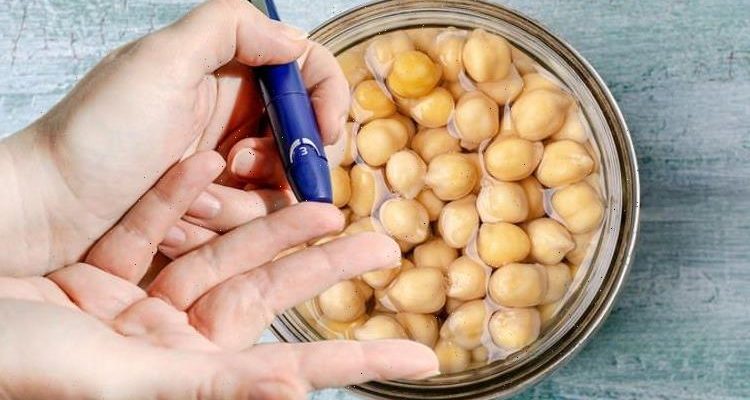Type 2 diabetes can be a 'devastating diagnosis' says expert
We use your sign-up to provide content in ways you’ve consented to and to improve our understanding of you. This may include adverts from us and 3rd parties based on our understanding. You can unsubscribe at any time. More info
Type 2 diabetes only becomes problematic if steps are not taken to lower high blood sugar levels. Blood sugar – the main type of sugar found in blood – is ordinarily regulated by insulin. However, this mechanism does not function properly if you have type 2 diabetes.
Fortunately, you can slow blood sugar rises and stabilise them by making sensible dietary dietary decisions.
Beans are a winning ingredient in this space, evidence suggests.
“Around the world, beans and rice are commonly consumed together as a meal. With type 2 diabetes increasing, the effect of this traditional diet pattern on glycaemic response has not been studied fully,” researchers wrote in a study published in the Nutrition Journal.
Glycaemia refers to the concentration of sugar or glucose in the blood.

To understand the impact beans have on the concentration of blood sugar in the blood, researchers evaluated the glycaemic response of bean and rice traditional meals compared to rice alone in adults with type 2 diabetes.
Seventeen men and women with type 2 diabetes controlled by metformin or diet/exercise aged 35-70 years participated in the randomised trial.
The white long grain rice control, pinto beans/rice, black beans/rice, red kidney beans/rice test meals, matched for 50 grams of available carbohydrate, were consumed at breakfast after a 12 hour fast.
Blood glucose concentrations at baseline and at 30 minute intervals up to 180 minutes after eating were collected.
DON’T MISS
Covid: The activity that makes you ‘twice’ as likely to catch it [INSIGHT]
High cholesterol: Symptoms to spot on your face – doctor [ADVICE]
Live longer: The warm drink which protects against heart disease [TIPS
The researchers found that blood sugar levels were “significantly lower” for the three bean/rice treatments in contrast to the rice control at 90, 120 and 150 minutes.
“Pinto, dark red kidney and black beans with rice attenuate the glycemic response compared to rice alone,” the researchers concluded.
They added: “Promotion of traditional foods may provide non-pharmaceutical management of type 2 diabetes and improve dietary adherence with cultural groups.”
Other foods that have a more modest impact on blood sugar include some fruit and vegetables, pulses and wholegrain foods, such as porridge oats.

Getting diagnosed
The NHS explains: “Type 2 diabetes is often diagnosed following blood or urine tests for something else.”
However, “you should see a GP straight away if you have any symptoms of diabetes”, advises the health body.
To find out if you have type 2 diabetes, you usually have to go through the following steps:
- See a GP about your symptoms
- The GP will check your urine and arrange a blood test to check your blood sugar levels. It usually takes about one to two days for the results to come back
- If you have diabetes, the GP will explain the test results and what will happen next.
“The GP will do their best to discuss the diagnosis with you, but this first appointment might only be 10 to 15 minutes,” adds the NHS.

Type 2 diabetes – what are the symptoms?
Many people have type 2 diabetes without realising. This is because symptoms do not necessarily make you feel unwell.
Symptoms of type 2 diabetes include:
- Peeing more than usual, particularly at night
- Feeling thirsty all the time
- Feeling very tired
- Losing weight without trying to
- Itching around your penis or vagina, or repeatedly getting thrush
- Cuts or wounds taking longer to heal
- Blurred vision.
“See a GP if you have any of the symptoms of type 2 diabetes or you’re worried you may have a higher risk of getting type 2 diabetes,” advises the NHS.
As the health body points out, the earlier diabetes is diagnosed and treatment started, the better.
Source: Read Full Article
